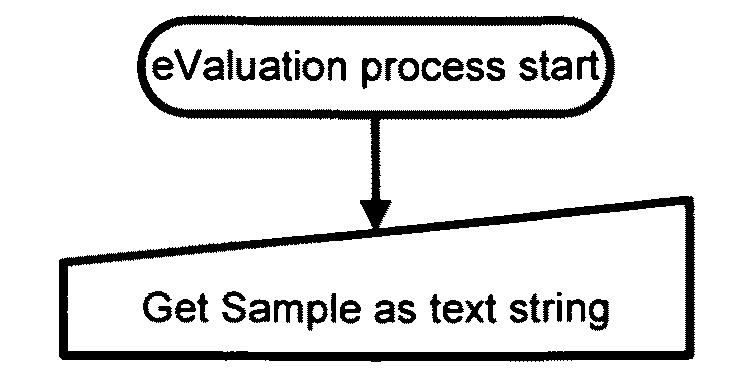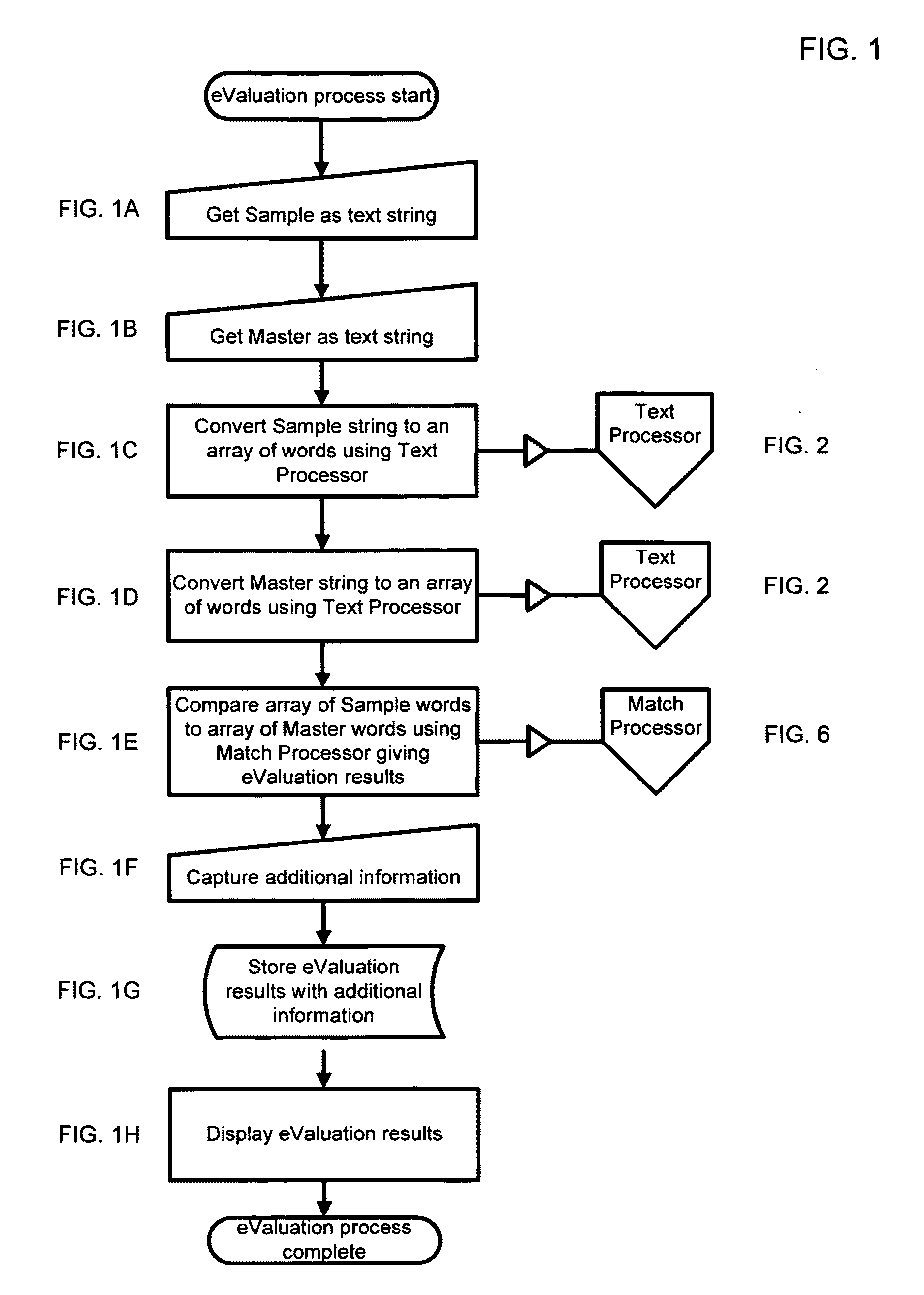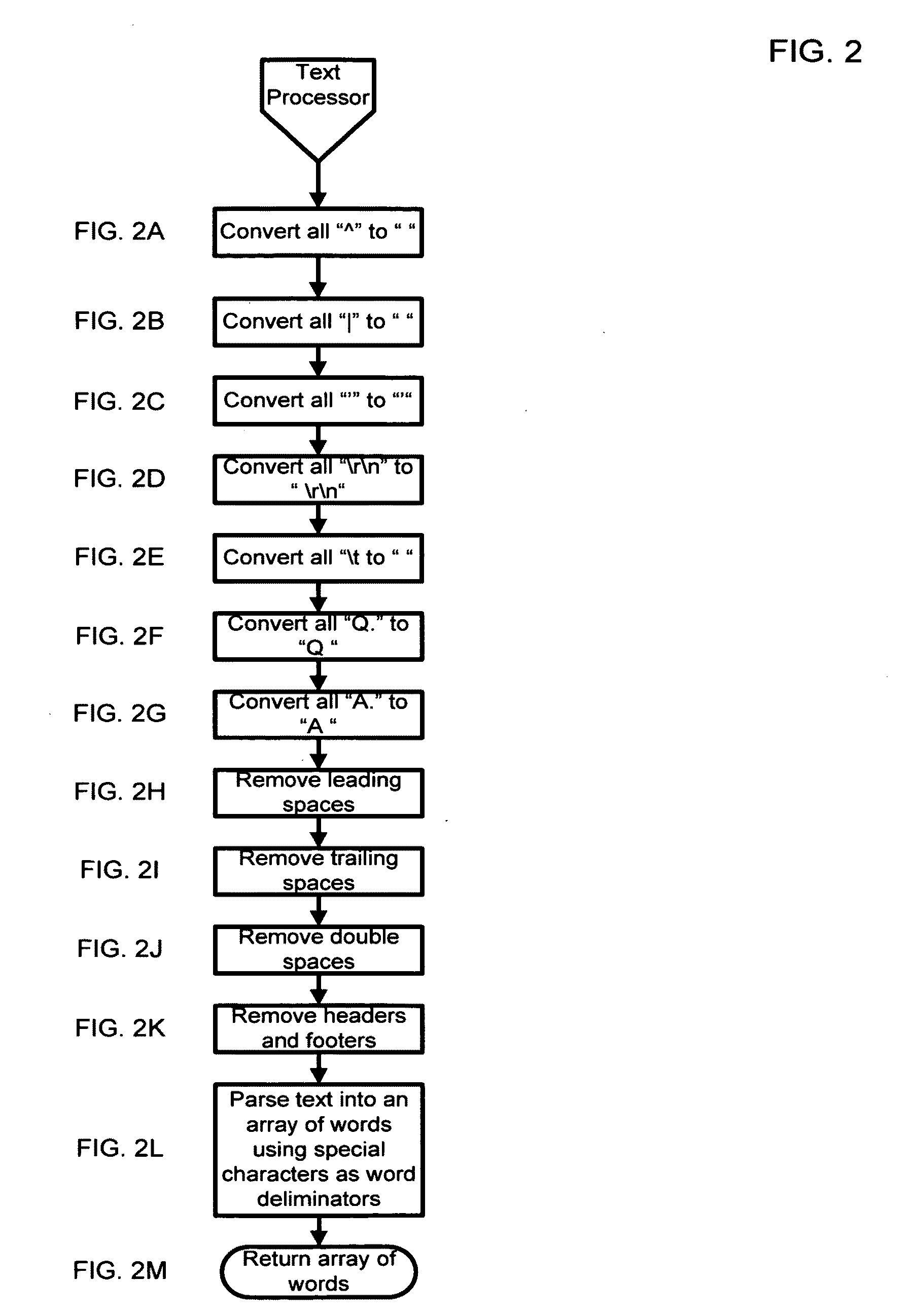At each practice level, a certain portion of the writer's writing does not correspond to the original spoken text, producing errors in the stenographic writing.
This approach is labor intensive, slow, and error prone, and cannot be manually performed with sufficient frequency for each typical writer to create a large enough body of identified errors to accurately deduce error patterns, relationships between accurate translation and errors, and prioritize practice appropriately.
Corrective action is, therefore, generally limited to admonition to writers to perform simple repetition of previous practice punctuated by
drill practice on standardized material containing content similar to words and passages in which writers have made errors in the past or on word lists composed of corrected versions of the errors themselves.
Thus practice tends to be time-intensive, demotivating, and tends to confuse improvement in translation accuracy based simply on acquired familiarity with the repeated material with improvement based on
elimination of the writing habits which caused the errors.
Furthermore,
current practice does not easily allow data on the practice results and progress of large groups of writers to be aggregated and analyzed with a view toward predicting which habits and sequences of activities which, if performed, have the highest likelihood of achieving success among writers at large.
Each writer, therefore, practices alone with substantial uncertainty as to the
efficacy of his or her efforts.
As a result,
machine and voice stenographic training programs experience exceptionally high levels of attrition as writers become discouraged and frustrated by lack of perceived progress.
However, as a tool to eliminate future errors, these
error identification-oriented programs display significant problems with respect to performing true writing analysis and evaluation beyond simple error identification.
Using a CAT
software program imposes several significant disadvantages on the writer with respect to error identification.
Third, many CAT programs include
artificial intelligence features which automatically correct errors before display thus preventing the writer from recognizing some portion of his or her errors at all.
This presents a particularly difficult problem for student writers who typically have not yet constructed extensive CAT dictionaries.
When such an appropriate dictionary is unavailable, many correctly written words may display as errors simply because their outlines are not contained in the CAT dictionary.
This deficiency tends to render performance progress difficult to discern.
Fifth, current CAT
programming technology makes no attempt to analyze or compare errors identified as to type, frequency, or relationship.
Sixth, current CAT technology, because it does not store reference masters for comparison, also does not dynamically create prescriptive practice from the context of submitted writings and / or identified errors.
As such, this type of current art still displays significant deficiencies with respect to writing analysis and evaluation.
First, the error reports typically generated by the current art compel the writer to review errors in the sequence in which they occurred rather than by commonality of error,
frequency of occurrence, or other deduced pattern.
Second, error identification alone leaves the writer with few options for prioritizing practice time beyond simply repeating the practice or segments thereof sequentially, attempting to correct each error in sequence during the repetition.
However, with respect to remedial practice, this presentation format does not allow writers to focus on types or kinds of similar errors easily.
Beyond making distinction between
punctuation and word errors, the current art typically does not aggregate errors by type or specifically disclose frequency of different types of errors.
This deficit also makes it difficult for the current art to facilitate easy identification of the relationships between different types and kinds of errors or the relationship of accurate or good writing to writing errors.
Third, the current art apparently does not attempt to create unique, dynamically generated, contextually extracted, prescriptive practice based upon extracting the errors in a writing, correcting them, and then extracting surrounding context and presenting the corrected error within it to allow the writer to focus subsequent practice on remedial needs properly.
Fourth because the current art does not apparently concern itself with extensive
categorization of error types, kinds, or frequencies, it does not offer a method to concentrate or focus practice on error types.
This process is labor intensive and significantly reduces the amount of writing which may be done in any given period of practice time, as some portion of each practice session must be dedicated to interpreting the error data presented.
Fifth, the current art does not provide sufficient capability to create remedial practice based upon contextually anchored corrections of the writer's identified errors as a part of the analysis process.
Since a significant portion of stenographic writing errors occur because of difficulty in correctly translating context previously heard, the present lack of contextually derived prescriptive practice creation significantly reduces the usefulness of the error identification in terms of facilitating writing improvement.
Thus, files cannot be written or edited and uploaded for later analysis.
This tends to limit the use of the current systems to those writers who are proficient in or at least comfortable with realtime stenographic writing, the most difficult of all stenographic writing, so it tends to
restrict the use of the current art to those practice instances which are likely to be the most inaccurate.
Such restriction poses the
disadvantage of making it more difficult to distinguish a writer's structural writing problems from those which result from simply attempting new material containing unfamiliar vocabulary or performing at a new and higher rate of
dictation speed.
Since the latter is rarely available to the writer, this type of current art is rarely used for stenographic error identification.
In those in situations instances where such is available, the limitations of the document-compare capabilities of such programs place the writer at the following disadvantages.
First, the discrepancies are noted in linear fashion with no automatic capability to organize them by categories without intervention by the viewer.
Such necessary organization would then be labor intensive and error prone.
Second, such programs do not typically create prescriptive practice materials extracted from the context of the writing.
Finally, the current art does not contain features which might easily be used to aggregate writer performance data from large groups of writers, to associate writing events with performance conditions at the time of writing, or to facilitate
data reduction to help create predictive practice models.
 Login to View More
Login to View More  Login to View More
Login to View More 


